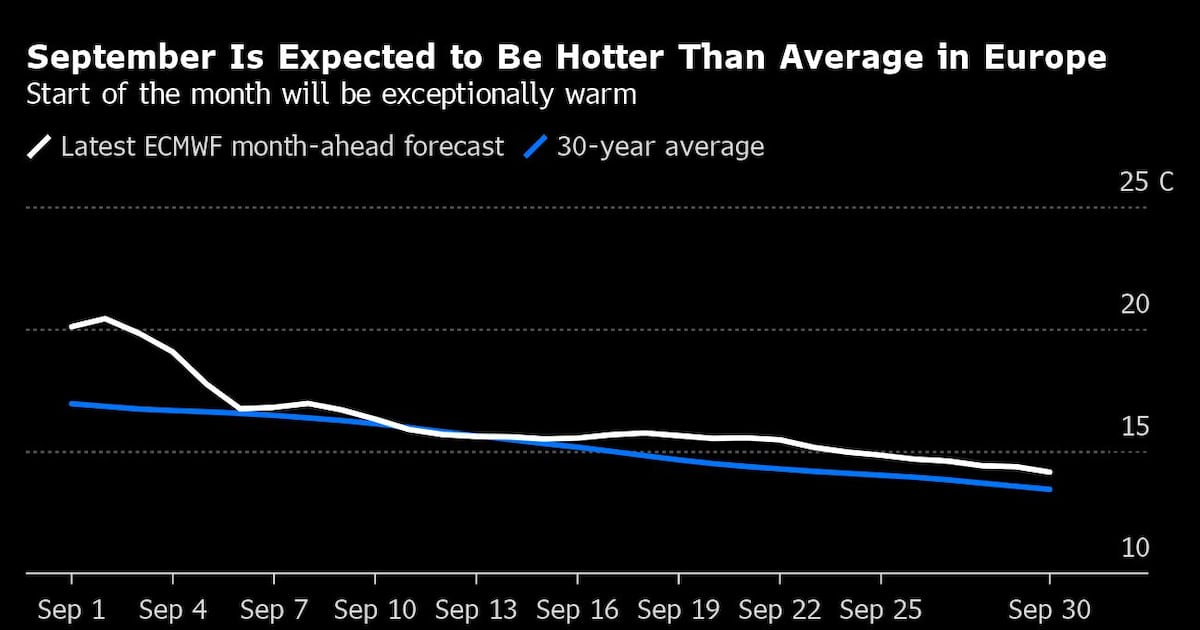Europe is poised for an unusually warm start to September, following a summer plagued by heatwaves and drought across the continent's southeast. Temperatures are forecast to be 5°C to 8°C above the 30-year average for the start of the month, according to Atmospheric G2. Southern Germany, the Balkans, Ukraine and the Baltic states are expected to bear the brunt of this warmth, with meteorologist Matthew Dross of Maxar Technologies Inc. highlighting the significant deviation from typical September weather patterns.
Global warming is increasingly pushing summer temperatures further into autumn, extending the heatwave season into September and even October. This trend elevates the risk of extreme weather events, including floods, severe storms and wildfires. However, the mild conditions could also delay the start of the heating season, mirroring the experience of 2023.
September is a crucial month for energy traders, as contracts for the upcoming heating season are negotiated towards its end. The surge in cooling demand during August drove power prices to record highs in Italy, but winter will pose a far greater challenge for the entire region.
The drought, a recurring concern this summer, is set to continue into September in several regions, including Iberia, the Balkans and eastern Europe, according to AccuWeather Inc. meteorologist Jason Nicholls.
Looking beyond mid-September, the forecast remains uncertain, contingent on the influence of a warm Atlantic Ocean and the emerging La Niña phenomenon. Atlantic temperatures have been near record highs for months, a factor historically linked to warmer September weather across Europe.
The remnants of tropical systems could also disrupt the September weather pattern, potentially unleashing heavy rainfall and strong winds on the UK, France and Iberia, as Nicholls warns. Last week, the remnants of Hurricane Ernesto triggered yellow weather warnings for Scotland as Storm Lilian swept in from the Atlantic.
The unseasonably warm September follows a summer marked by extreme heat, raising concerns about the potential for further environmental and economic impacts. The extended warmth, combined with the lingering drought, will continue to test the region's resilience in the face of climate change.
Article
Business

Europe Braces for Unseasonably Warm September After Summer Scorcher

